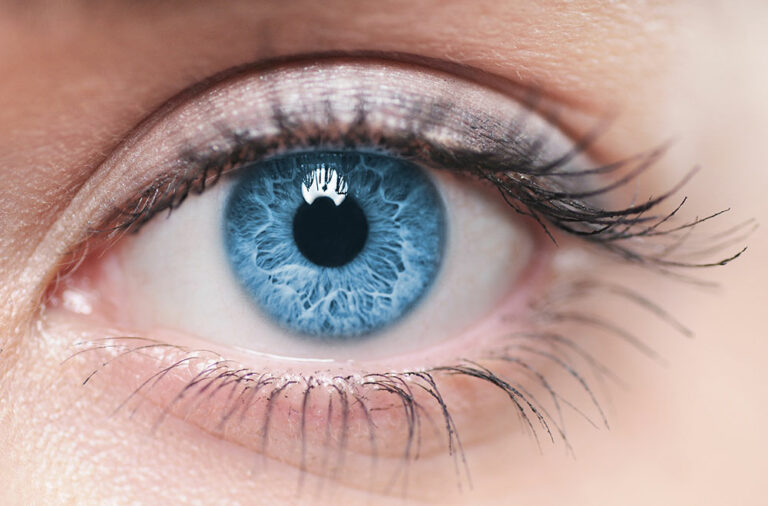Dry eye disease
What is dry eye syndrome?
Dry eye syndrome is a fibrotic disease caused by poor quality or insufficient production of tear fluid, which increases the risk of eye infection and inflammation.
Tears (or lacrimal fluid) are produced continuously by the lacrimal glands and then spread over the entire surface of the eye by the blinking of the eyelids. They are composed mainly of water and fatty substances and act as a barrier in front of the cornea (the eye’s first transparent lens, located in front of the iris and pupil), protecting it from external aggressors (such as dust and bacteria). Tears also keep the eye moist.
Poor quality or insufficient production of tears causes visual discomfort and can lead to irritation of the cornea. The main complications are:
- Conjunctivis : inflammation of the conjunctiva, the outer membrane of the eye and the inner membrane of the eyelid. The symptoms are similar to those of dry eye syndrome.
- Inflammation of the cornea : the surface of the cornea may be damaged if dry eye syndrome worsens, and may be subject to infection or ulceration, affecting vision
Dry eye syndrome affects more than 300 million people worldwide (or a third of the general adult population). It is one of the most frequent reasons for consulting an ophthalmologist. Dry eye syndrome affects more and more people every year, mainly because of the deterioration in our living conditions (pollution, air conditioning, screens, etc.).

What are the clinical signs of dry eye syndrome?
Dry eye syndrome normally affects both eyes. Symptoms may include:
- Tingling eyes, itching, burning sensations, sensations of sand in the eyes
- Pain or discomfort, worsening throughout the day
- Redness of the eyes
- Sticky eyelids, especially in the morning
- Reduced or blurred vision, especially when reading
- Sensitivity to light, smoke or wind
- Difficulty wearing contact lenses
- Tearing:the eyes produce tears to compensate for the dryness of the eye but to no avail
- Feeling of eye fatigue
Dry eye in Gougerot-Sjögren's syndrome
Gougerot-Sjögren’s syndrome is a rare disease affecting 2.5 million people worldwide. Its symptoms are linked to the infiltration of certain glands by lymphocytes, causing a reduction in their secretion. The salivary glands in the mouth and the lacrimal glands are the most commonly affected, resulting in a “dry syndrome”. Infiltration and inflammation can also occur in other organs such as the lungs, kidneys, joints and small blood vessels.
